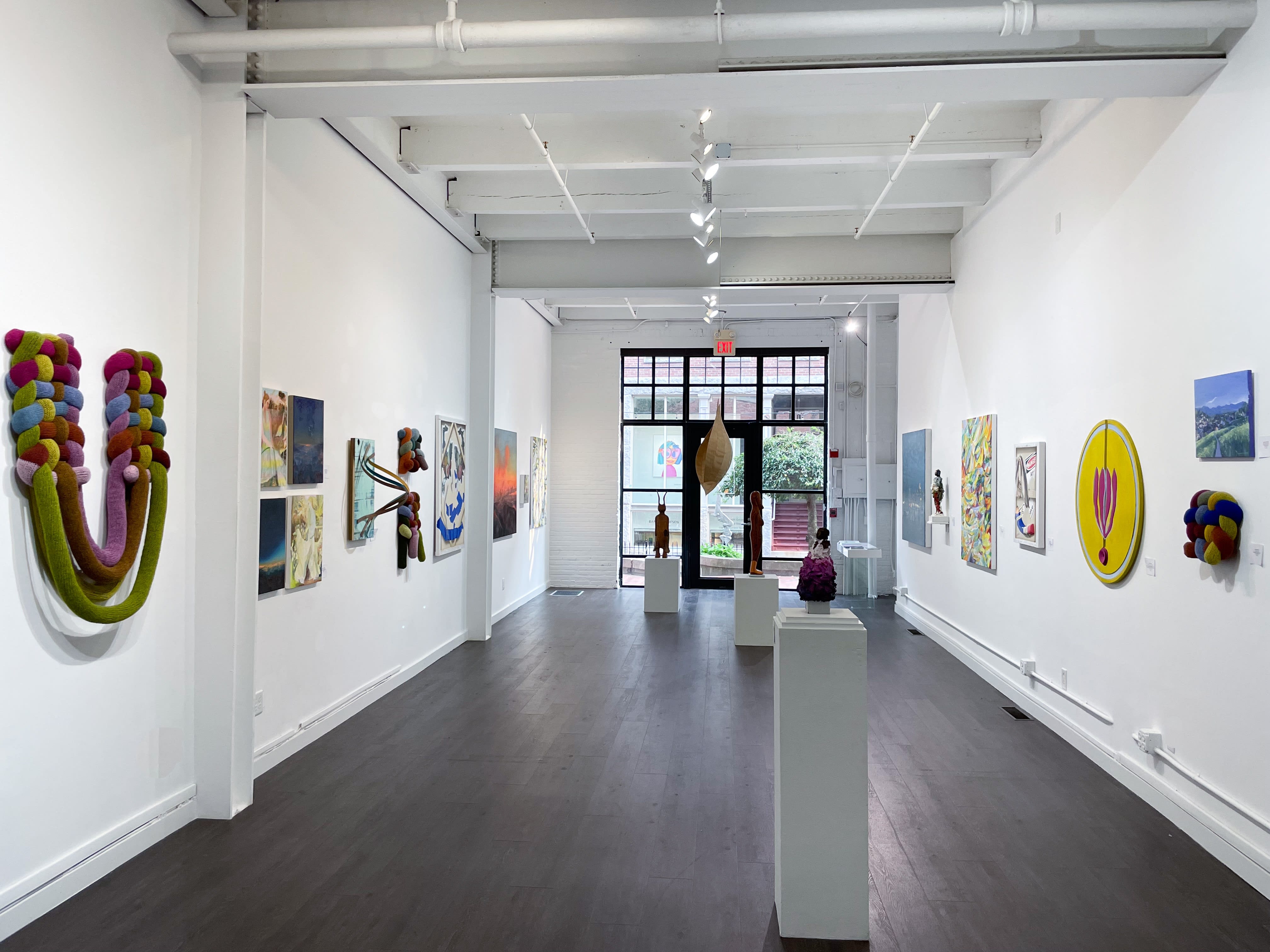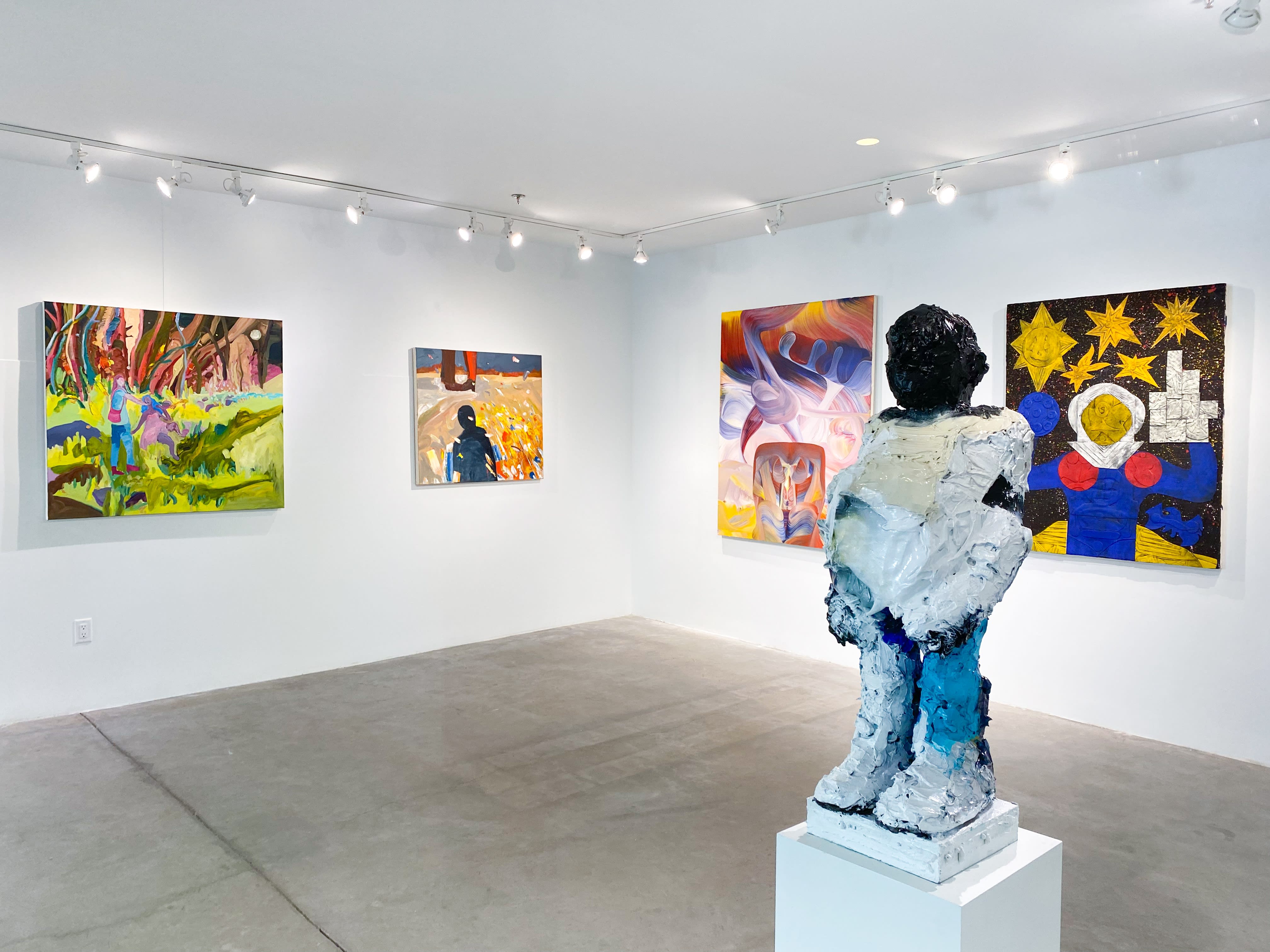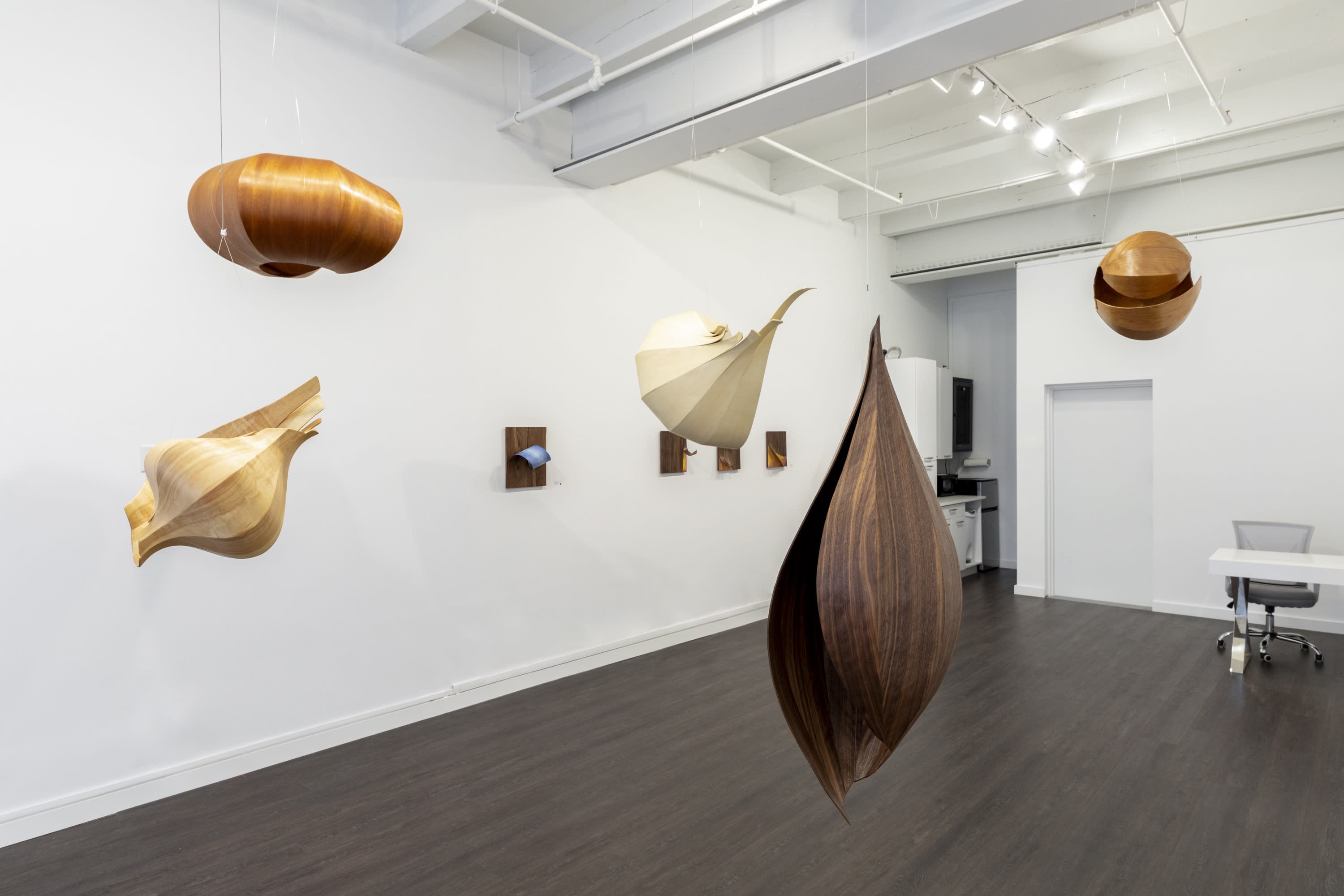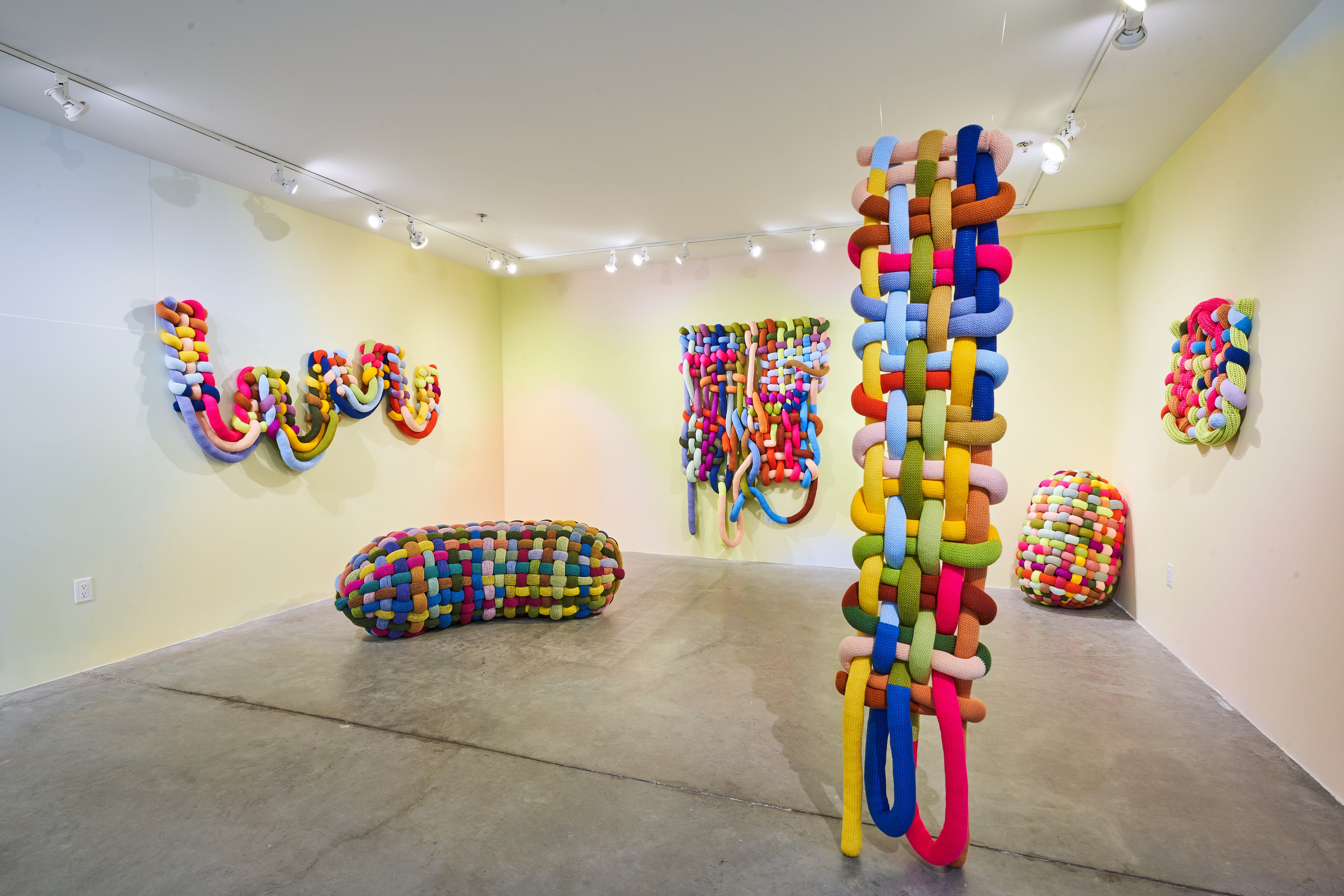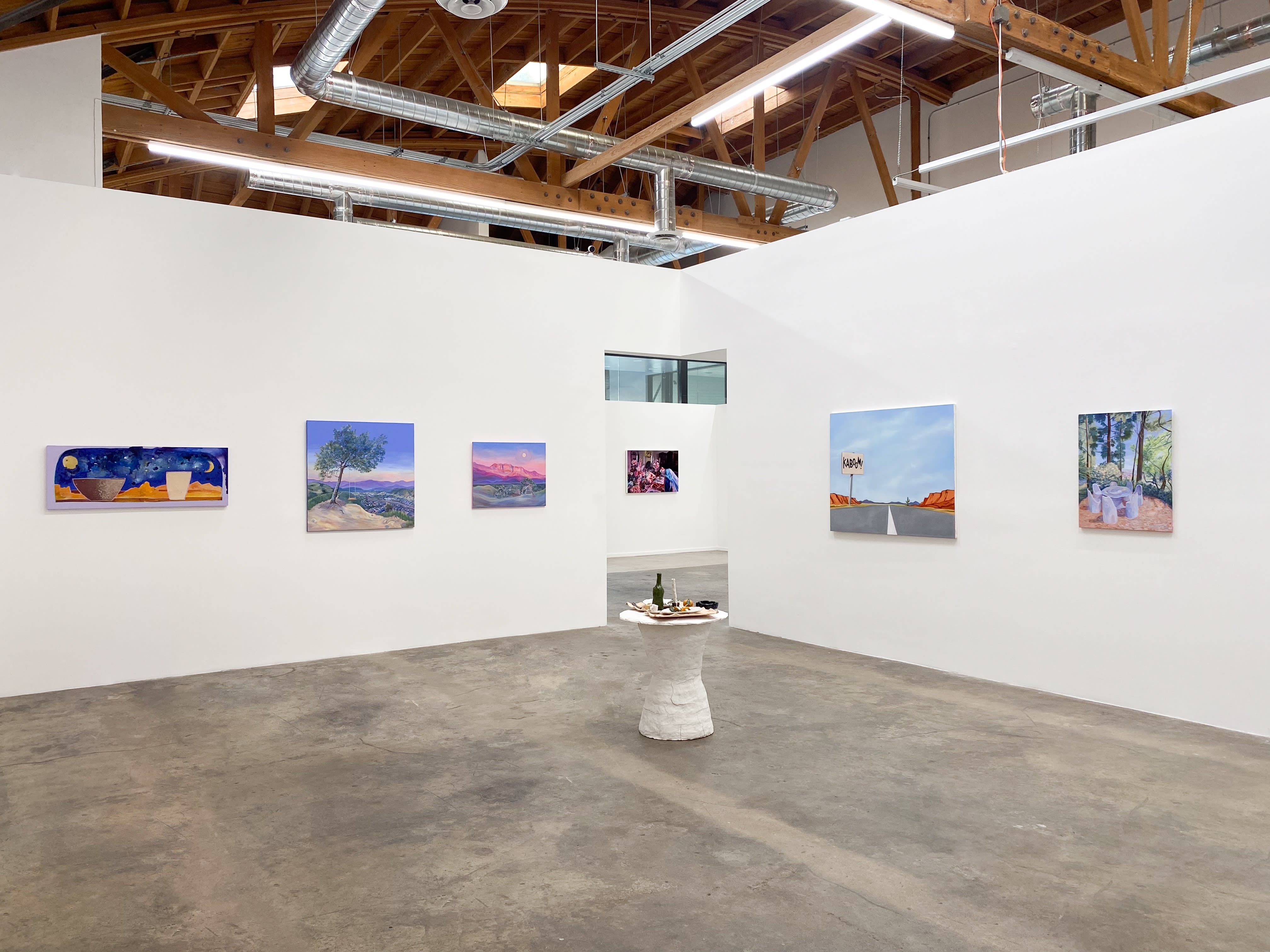After a nine-year run in the SoWa neighborhood, Abigail Ogilvy Gallery announced on August 17 that it will close the doors at its 450 Harrison flagship at the end of September. Founded by the eponymous Abigail Ogilvy in 2015, the gallery quickly became a reputable hub for emerging and mid-career artists including rising stars like Lavaughan Jenkins, who received a 2019 Foster Prize, and Alison Croney Moses, who was shortlisted for the Loewe Foundation Craft Prize in 2024.
Never having run a gallery before, Ogilvy opened the space during a period when galleries and design stores were flocking to the neighborhood. GTI Properties, the development company that owns functionally all of the SoWa buildings, had added a suite of new commercial spaces to the area, and rents were relatively inexpensive compared to Newbury Street storefronts. Ogilvy joined the cadre of entrepreneurial women gallerists who have led Boston’s commercial gallery scene within the past ten years, but she set the gallery apart by simultaneously looking beyond Boston while maintaining a community-focused program. In 2019, Ogilvy started exhibiting at art fairs, including SPRING/BREAK and Volta in NYC. The Boston gallery hosted programs such as poetry readings and fashion shows, and Ogilvy frequently collaborated with other galleries to host special events that would drive foot traffic to the neighborhood.
The closure of the Boston gallery comes on the heels of recent departures by other SoWa mainstays—Gallery Kayafas shuttered this August after twenty-one years in the neighborhood, and Fountain Street Gallery closed in March 2024 after seven years.
While the neighborhood is certainly changing, Ogilvy affirms that the decision to close is entirely personal. In 2018, Ogilvy began splitting her time between Boston and Switzerland due to her husband’s work. And in 2023, Abigail Ogilvy Gallery opened a new space in the heart of LA’s downtown arts district, helmed by director Kaylee Hennessey.
The Boston location’s final exhibition is aptly titled “Summer Send-Off.” Curated by John Witkowski, it features the work of twelve artists from the gallery’s national and international roster: Teddy Benfield, Mishael Coggeshall-Burr, Donna Dodson, Lavaughan Jenkins, Elizabeth King Stanton, Katharine Konietzko, Katelyn Ledford, Alison Croney Moses, Wilhelm Neusser, Katrina Sánchez, Elspeth Schulze, and Natalia Wróbel.
I caught up with Ogilvy a week after she shared the news to reflect on the legacy of the Boston space and to look ahead at what’s on the horizon out west.
The following conversation has been edited and condensed.
Jameson Johnson: Let’s talk about your early days in Boston. Why did you choose to open a gallery here?
Abigail Ogilvy: I love this story. I was working at a really demanding tech marketing start-up seven days a week, twelve hours a day. I decided to quit and had this idea in the back of my head to open a gallery. I was working at a restaurant and a hardware store and started thinking about what my first shows and first artists could be. And then the timing worked out perfectly—GTI had expanded the 450 and 460 Harrison buildings, and twenty new spaces opened up that were surprisingly affordable. I had lived in Boston for about five years at the time and loved that it was a small community. It felt like you could kind of be a big fish in a small pond, as opposed to New York or LA.
JJ: I think that’s a really common feeling in Boston. I certainly felt that when I was starting Boston Art Review. How did you get your footing?
AO: I didn’t have a Rolodex of collectors, so I needed to really build it from the ground up. I joined museum groups and got to know so many great people pretty much right away, which was awesome. Boston’s [art scene] really embraces something exciting and new.
JJ: What are some of the biggest changes you’ve seen for smaller galleries over the past nine years of your career?
AO: So many changes over the nine years, but the biggest might be that social media really became a place to buy and market art. Other than that, I think the way that artists are represented has really shifted. Galleries in general, even big ones, are more open-minded to loaning work or collaborating on exhibitions.
JJ: And of course, COVID changed the entire art world.
AO: Yeah, that was really a boom for the art market. People who might otherwise spend money on travel were instead focusing on their homes. There was also a good mentality about supporting artists. But more recently it’s been harder to wrangle people to attend in-person events again. We’ve had to rethink our lens of who we’re inviting and be smarter about how we approach getting people into the space. And we’ve always loved having events where it’s not necessarily even arts focused. We just did a really fun comedy show in Boston, and someone who had never been to our gallery bought two small pieces just from visiting that night. So I think those are the kinds of things that always have worked nicely in Boston and we’re trying out in LA too.
JJ: Tell me about how you arrived at the decision to close the Boston space and focus on the LA gallery.
AO: For me, the decision started almost a year ago when I was thinking more thoughtfully about my life. I was meeting with an executive coach who told me that I’d know I was ready to close the gallery if I can picture every single person that’s ever helped me, bought art from me, every artist we’ve shown and tell them that I’m closing the gallery. I was beyond emotional imagining that, so I knew I wasn’t ready. At the time, it really wasn’t such a serious idea—it was more an exercise imagining what my life could look like or if there was a different way to do this.
JJ: So what finally convinced you?
AO: I spent the next year being back for every opening, every big event, and I loved being present for all of those things. But it was a lot of back and forth. We have a really great team, but without me or Kaylee being in Boston, it just felt like the core team—the heart of the gallery—was missing. We both started to feel like we would be more effective if we brought some of our Boston artists along with us to LA.
JJ: What is the plan for the Boston artists? How are they going to fit into the program in LA?
AO: We’re definitely bringing a lot of them into the program in LA. When I started telling everyone the news, a lot of our artists were actually really excited to show in a new market. I’m really glad there were good feelings there.
I was actually thinking of something that Marie said when Fountain Street Gallery was closing, which is that artists are resilient. And it’s true—artists will always find new opportunities—but I’m really glad we could offer something other than just a cold end.
JJ: How do you see the space changing? Do you think you’ll be doing more fairs?
AO: I think we’ll be focused on the LA space. It’s a big space with two big rooms, so for our next year of shows, we’re actually going to mostly do two shows at a time so we can show even more artists. Our first show of 2025 is a solo show of Alison Croney Moses alongside a two-person show with Elspeth Schulze and Leigh Suggs.
JJ: There was a big New York Times piece that came out last weekend titled “A Sharp Turn in the Art Market,” all about the bubble that has appeared to have popped for emerging and mid-career artists.
AO: Right. Honestly, I’m just glad someone wrote about it. I had a call with an artist a few weeks ago, and we were talking about how there really hasn’t been a big piece about this.
JJ: Yes, or that the writing has all been referring to artists whose work sells at a really high price point. I think that this article was still talking about a certain echelon of artists that I don’t really see in Boston—the writer was referring to a lot of auction data. I don’t really know of any Boston-area working artists whose work is up at Sotheby’s. Do you?
AO: No, not really…
JJ: Anyway, what were you thinking about when you read that piece?
AO: Again with the resiliency, artists are always innovating. I’ve seen artists selling smaller pieces or working with different materials. And from a gallery perspective, it’s a good reminder that we always have to be thinking about our programming.
JJ: Can you tell me about a moment from your career that you are particularly proud of?
AO: It’s always related to being really proud of an artist accomplishing something new for the first time that maybe they thought they couldn’t or were unsure if they could, like an award, grant, or big sale. And I would say all artists we work with are really humble and down to earth. So I feel like no matter how many accolades they get, they still are floored when they get something new.
But more specifically, I still think about a poetry event we had at the gallery during our first year with an event host named Mr. Hip. Everyone who attended the event said they had never heard of SoWa before and had never been to the neighborhood. That was a really cool moment because I was happy to be bringing people there—whether it was to my gallery or a neighbor’s.
JJ: How do you see the neighborhood changing? Do you think it has a future as an arts district for Boston?
AO: I think I’ve wondered this for a while. Maybe the location for an arts hub will shift in Boston. Arts districts certainly move around in other cities; it’s just something that happens. Look at what Yng [Ru Chen] has done with Praise Shadows in Brookline. Overall, the market and the way that people buy art has really changed. We’re doing more sales from PDFs for clients that know our program but maybe don’t live in the city anymore. I still really believe that foot traffic is how to get new and exciting clients, but there’s definitely been a shift.
JJ: Do you have any advice for other galleries in Boston or maybe to someone who is looking to start one?
AO: I really think collaboration and learning from one another is key. And second, that there is power in numbers. We did this event once—I think we called it SoWa Summer Party—and we got every gallery to agree to be open late on a random Thursday night. We really pushed it to different HR groups and big companies. We got thousands of people to come—a lot of whom wouldn’t usually come to a First Friday.
JJ: I love that. What are you most looking forward to in this next chapter?
AO: Definitely looking forward to less time in the air and more time where I live. I felt most successful in Boston when I was super plugged into the community here. I was involved with a lot of groups that didn’t even have to do with the arts directly—like Mayor Walsh’s Imagine Boston 2030 initiative—and those kinds of things were really generative. I love being a really involved member of any community I’m in, whether it’s Geneva, Switzerland, Los Angeles, or Boston.
I’m also looking forward to continuing to collaborate with Boston colleagues. We will be working with Mallory Ruymann again of art_works this fall and she will be curating Boston artists Sneha Shrestha and Cicely Carew into a two-person show occurring in November at our LA gallery. We foresee a lot of bi-coastal collaboration with the space and feel very excited about it!
JJ: Well we’re going to miss having you in Boston. I really believe that Boston’s best art spaces are being led by bold women—I think it’s something special about our little scene—and you have definitely been a part of that.
AO: Thank you, Jameson! I’m excited to keep following along with you and BAR.

